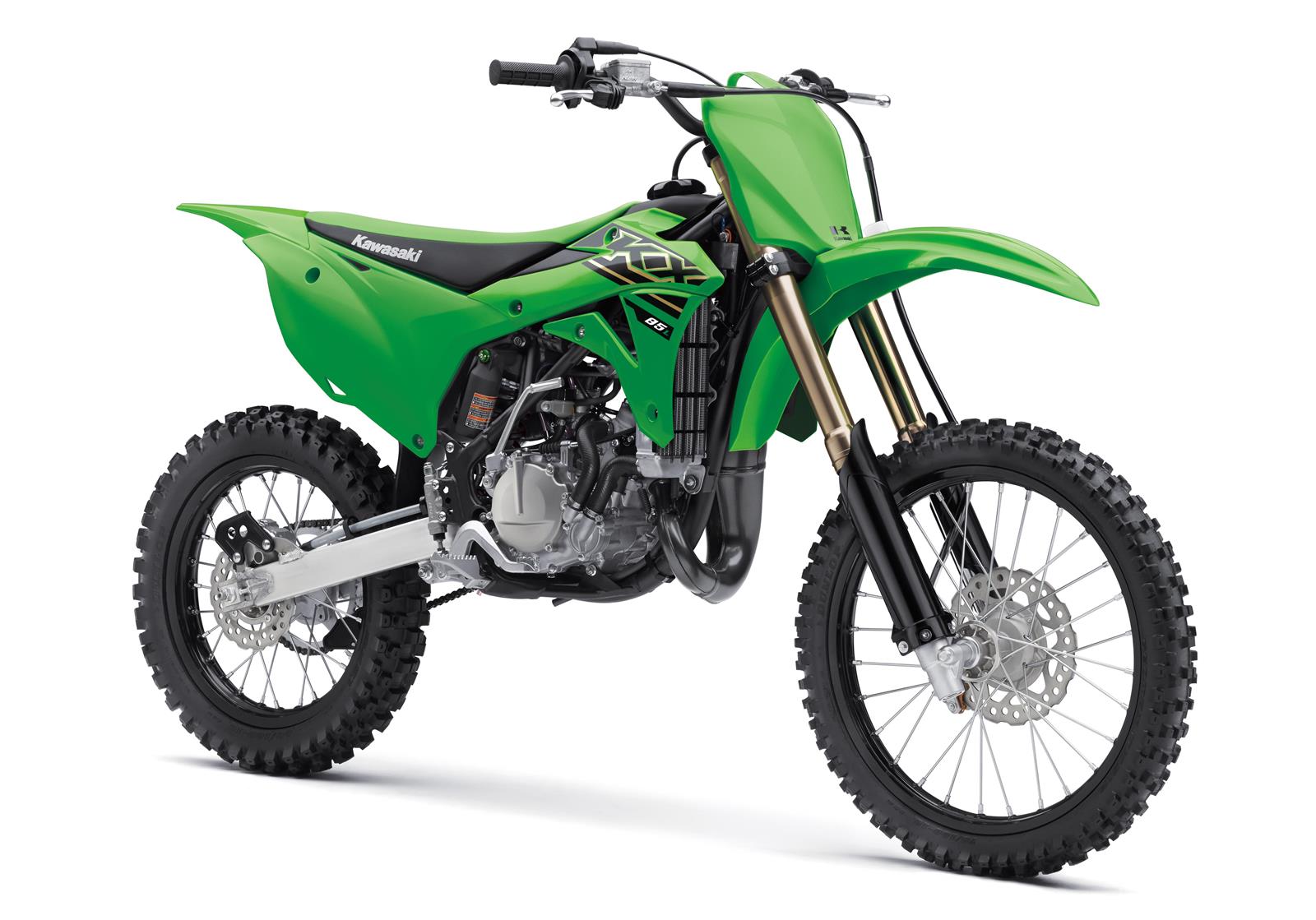Kawasaki Two-Stroke: Unbridled Power And Two-Stroke Legacy
Through meticulous analysis and extensive research, we have compiled this informative guide to assist our target audience in gaining a deeper understanding of Kawasaki's two-stroke legacy and its contributions to the world of motorcycling.
| Kawasaki Two-Stroke | |
|---|---|
| Power | Unbridled, exhilarating power delivery |
| Performance | Exceptional acceleration, high top speeds |
| Legacy | A storied past that continues to inspire |
FAQ
This FAQ section provides answers to frequently asked questions about the legacy of Kawasaki two-stroke engines, addressing common concerns and misconceptions.

Candy Purple 1975 Kawasaki H2 750 two-stroke triple with only 7k on the - Source www.reddit.com
Question 1: What distinguishes Kawasaki two-stroke engines from others?
Kawasaki two-stroke engines are renowned for their exceptional power-to-weight ratio, delivering remarkable performance in various applications, including motorcycles, jet skis, and handheld power tools.
Question 2: How does the two-stroke cycle differ from the four-stroke cycle?
The two-stroke cycle completes combustion and exhaust in two strokes of the piston, while the four-stroke cycle requires four strokes. Two-stroke engines are generally lighter and more compact than four-stroke engines, making them ideal for applications requiring high power-to-weight ratios.
Question 3: What are the benefits of Kawasaki's KIPS (Kawasaki Integrated Power Valve System)?
KIPS optimizes engine performance across the RPM range by electronically controlling the exhaust port timing. It enhances low-end torque for improved acceleration and smooths power delivery for a more responsive riding experience.
Question 4: How does Kawasaki address the emissions concerns associated with two-stroke engines?
Kawasaki has implemented advanced technologies, such as direct fuel injection and catalytic converters, to reduce emissions while maintaining the performance and efficiency of its two-stroke engines.
Question 5: What maintenance considerations are essential for Kawasaki two-stroke engines?
Proper maintenance is crucial to ensure optimal performance and longevity. Regular replacement of spark plugs, air filters, and two-stroke oil is essential. Specific maintenance schedules may vary depending on the application, so it is recommended to consult the owner's manual for detailed instructions.
Question 6: What is the future of Kawasaki two-stroke engines?
Kawasaki remains committed to the development and production of two-stroke engines, continuously refining and innovating to meet evolving performance and emissions standards while maintaining the legacy of unbridled power.
These FAQs provide a comprehensive overview of common concerns and misconceptions surrounding Kawasaki two-stroke engines. Understanding these aspects allows enthusiasts and users to appreciate the unique advantages and legacy of these remarkable powerhouses.
Tips
The Kawasaki Two-Stroke: Unbridled Power And Two-Stroke Legacy article provides numerous tips for riding and maintaining a Kawasaki two-stroke motorcycle. Here are some of the most important:
Tip 1: Check the Air Filter
A clean air filter is essential for proper engine performance. A dirty air filter can restrict airflow and cause the engine to run lean, which can lead to overheating and damage. Check the air filter regularly and clean or replace it as needed.
Tip 2: Use a High-Quality Oil
The oil in a two-stroke engine is critical for lubrication and cooling. A high-quality oil will help to protect the engine from wear and tear and will also help to keep it running cool. Use a synthetic oil that is specifically designed for two-stroke engines.
Tip 3: Inspect the Spark Plug
A spark plug that is in good condition is essential for proper ignition. A fouled spark plug can cause the engine to run rough or stall. Inspect the spark plug regularly and replace it if it is worn or damaged.
Tip 4: Keep the Carburetor Clean
A dirty carburetor can cause the engine to run lean or rich, which can lead to performance problems. Clean the carburetor regularly using a carburetor cleaner and a soft brush.
Tip 5: Check the Exhaust System
A damaged exhaust system can cause the engine to lose power and run hotter than normal. Inspect the exhaust system regularly for leaks or damage and repair or replace it as needed.
By following these tips, you can help to keep your Kawasaki two-stroke motorcycle running in top condition for many years to come.
For more information on riding and maintaining a Kawasaki two-stroke motorcycle, refer to the owner's manual or consult with a qualified mechanic.
Kawasaki Two-Stroke: Unbridled Power And Two-Stroke Legacy
Kawasaki's two-stroke engines have had a lasting legacy in the automotive industry. Their unbridled power and innovative engineering have made them a favorite among enthusiasts and collectors alike.

KX85-II MY 2021 - Kawasaki Europe - Source www.kawasaki.eu
- Unbridled Power: Two-stroke engines are known for their exceptional power delivery, providing a thrilling driving experience.
- Lightweight Design: The compact size and lightweight construction of two-stroke engines contribute to enhanced handling and performance.
- Efficiency and Simplicity: Two-stroke engines are more fuel-efficient than four-stroke engines, owing to their simpler design and fewer moving parts.
- Two-Stroke Legacy: Kawasaki has a rich history in two-stroke engine development, with iconic models like the H1 and KR250.
- Environmental Concerns: Emissions regulations have led to a decline in two-stroke engine production, as they produce more emissions compared to four-stroke engines.
- Collector's Delight: Kawasaki two-stroke bikes have become highly sought-after collectibles, prized for their performance and historical significance.
In conclusion, Kawasaki's two-stroke engines have been a testament to the company's engineering prowess. Their exceptional power, lightweight design, and efficiency made them a favorite for enthusiasts and racers alike. While stricter emissions regulations have reduced their production, their legacy continues through the iconic models and passionate collectors who appreciate their unique character and historical importance.
Kawasaki Two-Stroke: Unbridled Power And Two-Stroke Legacy
The Kawasaki two-stroke engine has a long and storied history, dating back to the early days of motorcycling. Two-stroke engines are known for their simplicity, power, and light weight, making them ideal for use in motorcycles. Kawasaki has been a pioneer in the development of two-stroke engines, and their motorcycles have been ridden to victory in countless races.

The Kawasaki KX450–SR is the pinnacle of Kawasaki’s four-stroke - Source www.kawasaki.co.uk
One of the most important aspects of the Kawasaki two-stroke engine is its power. Two-stroke engines produce more power than four-stroke engines of the same displacement. This is because two-stroke engines fire twice per revolution, while four-stroke engines fire only once. The extra power of the two-stroke engine makes it ideal for use in motorcycles that are designed for speed and performance.
Another important aspect of the Kawasaki two-stroke engine is its light weight. Two-stroke engines are much lighter than four-stroke engines of the same displacement. This is because two-stroke engines have fewer moving parts than four-stroke engines. The lighter weight of the two-stroke engine makes it ideal for use in motorcycles that are designed for handling and maneuverability.
The Kawasaki two-stroke engine has a long and storied history, and it continues to be used in motorcycles today. Two-stroke engines are known for their simplicity, power, and light weight, making them ideal for use in motorcycles that are designed for speed, performance, and handling.
Conclusion
The Kawasaki two-stroke engine is a powerful and efficient engine that has been used in motorcycles for decades. Two-stroke engines are known for their simplicity, power, and light weight, making them ideal for use in motorcycles that are designed for speed, performance, and handling.
Kawasaki has been a pioneer in the development of two-stroke engines, and their motorcycles have been ridden to victory in countless races. The Kawasaki two-stroke engine is a testament to the company's commitment to innovation and performance.
The Legacy Of Benkos Biohó: A Maroon Leader's Struggle For Freedom And Autonomy, Matthew Huttle: Visionary Entrepreneur And Technology Leader, Guy Fieri: Culinary Icon And TV Personality, Certified Track Meet Official: Ensuring Fair And Accurate Competitions, Drake Melbourne: Unparalleled Luxury And Sophistication Amidst Melbourne's Heart, Sydney Showdown: Sixers And Thunder Clash In Fierce BBL Derby, Cyclone Queensland: Aftermath, Impact, And Recovery Strategies, Discover The Ultimate Gelp: A Comprehensive Guide To Enhanced Performance, Mateo Pellegrino: Rising Star Of Italian Gastronomy, Qatar SC Vs Al Shamal: Match Preview And Predictions,